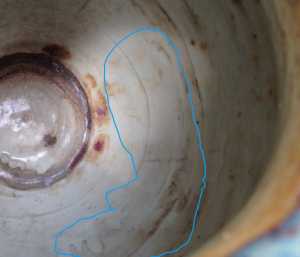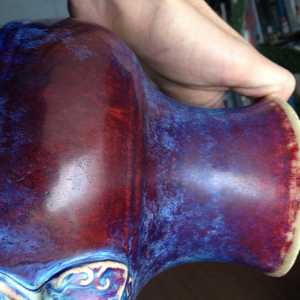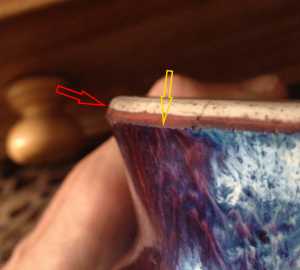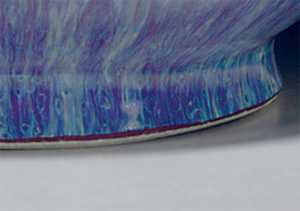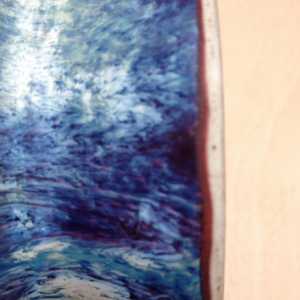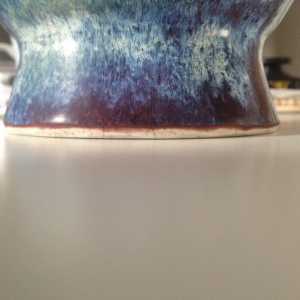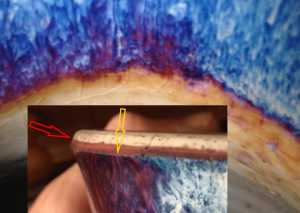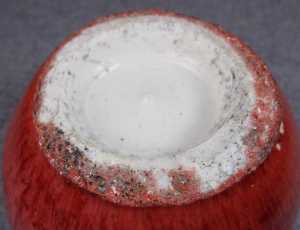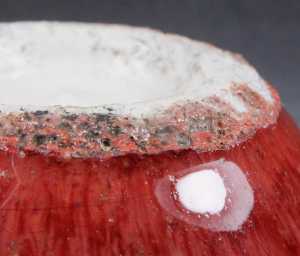The Chinese and Asian Art Forum. For Fans, Collectors and Dealers.
 Basic Rules For the BidAmount Asian Art Forum: Talk about whatever you want. You can even discuss and offer things that are for sale if they are authentic. Maximum image file size per post is 2 MB. Images of 700pxl x 700pxl are optimal if saved at a medium resolution. Be respectful of others and enjoy yourself. Click the YouTube link for a brief tutorial on using the forum. You can also EMBED Videos by cutting and pasting from You-Tube, Vimeo etc.
Basic Rules For the BidAmount Asian Art Forum: Talk about whatever you want. You can even discuss and offer things that are for sale if they are authentic. Maximum image file size per post is 2 MB. Images of 700pxl x 700pxl are optimal if saved at a medium resolution. Be respectful of others and enjoy yourself. Click the YouTube link for a brief tutorial on using the forum. You can also EMBED Videos by cutting and pasting from You-Tube, Vimeo etc.
NOTE: To post an item or add a new post, click open the category title from the FORUM LIST, and CLICK the Blue ADD TOPIC button.
Dear Craig,
excellent post, well done.
Dear Tom, it is matter of taste. All the other vases that you have posted are much finer than your one.
First at all, it seems that you believe that the effects that you see on your vase are deliberately made by the potter. If that is what you think, then it is not true. The effects can be controlled within certain limits, but the final appearance is random.
For the finer Chinese taste, that of the connoisseurs, of the Court, of the Scholars, the effect on your vase is too much showy, or exuberant, flamboyant. It would never be accepted at the Court, while the other vases are much finer and elegant. They have class.
Suppose that your vase is 18th century and much well made, with higher quality of paste, perfect shape. Even then, it will never reach the same value of the other ones, just because of that, the effect is too much showy.
Dear John, I am not expert on marks, because as said I do not spend time about them. But to answer your question yes, marks can vary. I have an imperial Qianlong snuff bottle with a strange mark. Some experts said that it couldn’t be imperial because of that, but then other at least three surely genuine items of the period have been found with the same exact variation in the mark.
Regards,
Giovanni
I was wondering if these types of vases would have been used to hold wine? Would that have been the purpose, as with the original Bronze Hu vessels. The colour of this one is very reminiscent of red wine.
As a really long shot. There appears to be what could be wine stains inside the vase.. see the highlighted areas I circle in blue (I know some of the red glaze spilled over into the bottom of the vase - I'm referring to the browning run lines that look a bit like wine legs - circle in blue)
@clayandbrush @johnshoe @william
Hi everyone, thanks for your input. I sent some photos (and a link to this thread) to Peter for an $12 appraisal. He says that the foot has not been filed or ground. He says "it's not ground back, the glaze ends nice and neatly " It might have been polished, but not filed.. He also says "Its a nice white paste, the paste is nice and tight."
@thomasumjohnson I would be curious to know the full assessment Peter gave it in his own words if you care to share that with us.
I’m going to argue that the foot has been filed or trimmed gridded. Your pictures show this.
I’m mean the vase has been filed according to the pictures you have submitted to us.
Dear Thomas,
I do not know which pictures you have sent to Peter, probably not the right ones. Brian is right, there are no doubt at all that the glaze has been filed at the foot.
First at all: by looking at the glaze itself, on the other areas of the vase, it is evident that this glaze is extremely running. Look at what we have at the ring handles, an excessive pooling. This means that at base this glaze can’t end neatly, it must have been flooded on the floor of the firing place.
Then, look at the picture below: the yellow arrow shows the neat end of the glaze, or more exactly, the neat end of the skin of the glaze. That is not a natural glaze border. Besides, the red arrow shows that glaze and paste are on the same plane, there is no step between them. Both arrows are showing the clear effect of grinding.
What about the dating he provided? Although, if he was convinced that the glaze was not grinded, it may change the dating attribution.
Regards,
Giovanni
I gave him the same pictures I gave you. The same pictures of the foot / edge in this post. I also sent him a link to this post, which he looked at as well.. It is as sotherby's / christie's describe it. As I have quoted it to you. It seems that these vases haven't been ground, just polished. Perhaps neatly cut when wet? the fired and polished, not ground. Anyway this is what Peter says, again he has the pictures in this thread, of the foot, that everyone commented on.
he said first half of the 19th century. Nevertheless, he didn't say why he gave it this date. As far as I can see there is no visible reason why it can't have been made 50 years earlier. It has all the physical attributes of either or, so how is an exact date ascertained?
He made a youtube video, because he's hurt his hand and can't type (hope he's OK.) so from the horses mouth, here's the link:
here again is a picture of a foot of a Qianlong Flambe vase from Christies and the foot on my vase. They are almost identical:
christie's
the vase I have
here is a link to the christies vase:
https://www.christies.com/en/lot/lot-5348098
I’m figuring it really doesn’t matter at this point what anyone says. You are convinced that your vase is a Imperial Qinglong vase. So I will leave it at that and wish you good luck and success with your vase and hope your find the clarity you seek.
Dear Thomas,
When you posted this vase, you had a few negative comments. I have been the first one telling you that, despite the blurred pictures, the avse could be early 19th century, and confirmed it after seeing slightly better pictures. I suspect that you are of those who takes pictures with the phone, and that is the reason why you can’t post on focus pictures of the border of the glaze around the foot.
I am glad that Peter too is of the same opinion. He is of the same opinion because of the appearance of the glaze IMO, especially because of the abundant pooling.
I am sure that if you could provide clear pictures of the border of the glaze he will agree with me.
What said by Christies, about the glaze of their vase, has no importance. It surely would not be the first time that they are wrong. It all depends on who has examined it.
It is not necessary a big experience to see that the border of the glaze has been filed.
Look at the picture here below, we have there the glaze border inside and outside the vase. Do them finish the same way? Again, no big experience necessary, it is evident.
At the base, there is a thin bright line highlighted by the yellow arrow. It is the border of the skin of the glaze, very typical, only visible when the glaze has been filed. From there to the border of the brown area, the space is divided in two bands, being that under the skin of the glaze clearly rougher. That is the thickness of the glaze, and what looks like roughness is actually the half-cut bubbles.
I have seen that many times. Take pictures with a real camera and you will see.
Now, as said by Brian you can believe what you want, but if you think that “As far as I can see there is no visible reason why it can't have been made 50 years earlier. It has all the physical attributes of either or, so how is an exact date ascertained?” it simply means that you are not only not seeing, you are also not hearing, because the reason has been clearly explained to you. Instead of asking yourself “why not”, try to prove if what it has been told to you is wrong. That is the right way to see things. If one has no reasons to prove the contrary, it should be more profitable to him to accept what it has been exposed to him, especially if backed by reasons.
Regards,
Giovanni
@clayandbrush Thanks Giovanni and everyone for all you input on the vase. I'm new to this and it's good to have a place to learn about these things from people with real experience like your good selves. I am new, but from what I have learned so far about this industry / academic area is that people have very different opinions about a piece. I took this vase to Sworders, a very reputable auctioneers in the U.K. The expert there Yexue Li and her colleague said the vase was brand new. I asked her if she was 100% sure, she said "yes 100%" She is apparently an expert. She said it was because of the matte finish, it wasn't glossy enough. So the next day I sent her a picture of a matte looking 18th century flambe vase from the British Museum, clearly matte. Many of these vases selling for 7 figures are very matte looking and Peter says "the dryness isn't an issue, they can be like that" Now Peter another expert has said it is 100% not brand new, clearly not made to fool but in his opinion not Qianlong, but possibly 1810 or perhaps later. 1810 is less than 15 years from the end of the period, so it is no wonder that I'm still interested in getting more opinions on this. Giovanni, you have been very helpful and you clearly know what you are talking about, but I don't know what you mean by "I'm not listening" If I listened to Yexue Li from sworders I wouldn't be here as I would have taken her word for it and perhaps sold it already. When you say " the reason has been clearly explained to you." what do you mean? are you saying the foot has been ground therefore it's not 18th century? if so Peter seems to disagree and so do Christies. I'm not saying that you are wrong and Christies is right, that Peter is right etc.. I am just learning that everyone seems to disagree. I showed pictures of it to jessica harrison-hall, the head of the China department at the British Museum and she said "it's not real because it has this weird brown wash over the mark, so I pointed out to her, that is what Qianlong flambe vase marks look like and showed her some examples. She said that she didn't realise they looked like that and that she therefore didn't know if it was authentic or not, but I was welcome to come to the study rooms, when they are open to do further research.
All I am trying to do is work out who's opinion to take and who's not to. All I have learned so far is that any expert can be wrong. Peter and Yexue Li can't both be right. It can't be both brand new and definitely not brand new. They are both supposed to be experts clearly saying the opposite thing. Saying this I think it's clearly not brand new. But you see my point. I am listening but who should I listen to? at the moment I can't even ascertain if the foot has been ground or not. But I have looked at nearly every 18th flambe vase sold at the major auction houses and the feet on all of them look the same. Are they all fake?
I can't ascertain if the foot has been ground or not becasue Peter clearly says it hasn't been ground (I think he's looking at the same photos tbh... ) , whilst the consensus here is that it definitely has been.
Dear Thomas,
OK, now I understand you. As a beginner, you are expecting uniform opinions; it is perfectly understandable.
Now, it happens that this is a special field. I am not surprised that the “expert” of an auction house is indeed not expert. The fact that the lady who told you that the vase is modern because “the glaze is not glossy enough”, shows that she is still of those who judge a piece by a detail and not by its whole. Typical of people that are not expert. Do not be surprised by that, be sure that it is common. Even at the bigger auction houses, today, is hard to find a real expert.
Your vase is first half of 19th century, as said by myself and by Peter. You can be sure of that, and if you have doubt, since you seem to live in London, I am suggesting you to bring it to Bonhams and ask to show it directly to Colin Sheaf. Then you will have a sure answer. But you have to show him the vase, not the pictures because your pictures are not clear. I am sure he will confirm our dating, he is one of the few experts that I am trusting. But do not have great hopes; although confirming that it is first half of 19th century, he will most probably tell you that it is not suitable to be auctioned by them, because of the quality.
Anyway, for your knowledge, why the vase couldn’t be only a few years earlier? It can’t because those few years are marking a relevant change in quality. To be clear, your vase, if made under Qianlong, would be probably discarded. If meant for the Court, it would be surely discarded. Too much running and pooling glaze, with consequent total lack of control at the foot, and a too much fancy looking effect of the glaze. The visual effect that you are finding as being superior to the originals sold at high prices at the major auctions, is actually what is detracting from being appreciated; because it is just fancy, it is lacking elegance, it would not be appreciated by the refined taste of only a bunch of years earlier. It is not the quantity of colors that makes it remarkably elegant, it is a simple elegance.
As for the glaze being filed or not, now here it is time to go to sleep. Tomorrow I will see if I have something from which take clear pictures, so that you will be able to determine it yourself.
Good night
Giovanni
Dear Thomas,
digging among my things, I have found a few examples that, despite being all them of small size, will show you the difference between a naturally ending border of the glaze and a filed border.
These are very small items, hence the glaze is much thin than that on your vase, so what you see here should be even more evident on your vase.
Because I can’t see how insert images within the text, I will show my examples in three separated posts.
Frankly, all the following should not be necessary, because a bit of logic tell us that the glaze of your vase can’t naturally end near the foot. It is simply I M P O S S I B L E. Think a bit, even with not great experience you can see the pooling of the glaze at the lower part of the ring handles. You see that, right? Now, consider that as the glaze is going down further from that point, it is accumulating pooling and hence its thickness is increasing. What will happen near the foot? It is obvious that the glaze will go beyond the foot, sticking it on the bottom of the firing place. You may ask why this didn’t happen during the 18th century. It is because the glaze was less running, i.e. less fluid, and precisely applied so that it will stop naturally near the foot.
Anyway, let’s go ahead.
Here you can see a very small 19th century water pot, that has a red glaze with a bit of flambé effect (not shown here).
Even on this small item (2 inches and an half tall), the glaze flooded down and sticked the piece to the bottom of the firing place. Then in order to remove the pot, it has been necessary to break the glaze, which means also breaking (chipping) part of the foot. You can see the bright surface of the glaze (it’s “skin”) and then, beyond the chipped border, the matte part which is the glaze inside it thickness.
All this has not been filed, and it is exactly how your vase was looking when removed from the kiln. And Christie’s vase too, regardless what they say.
Thanks for visiting "The BidAmount Asian Art Forum | Chinese Art"
If you sell on eBay, or have a shop feel free to post images and descriptions and links.
Check back often for discussion about the latest news in the Chinese art and antique world. Also find out about the latest Asian art auctions at Sotheby's, Christie's, Bonhams and Tajans.
Auction results for: fine porcelain, ceramics, bronze, jade, textiles and scholar's objects. As well as Japanese, Thai, Vietnamese and other Asian cultures.
Thank you,
Peter Combs
Topics and categories on The BidAmount Asian Art Forum | Chinese Art
Kangxi vases, Kangxi dishes and chargers, Kangxi ritual pieces, Kangxi scholar's objects, Qianlong famille rose, Qianlong enamels, Qianlong period paintings, Qianlong Emporer's court, Fine porcelain of the Yongzheng period. Chinese imperial art, Ming porcelain including Jiajing, Wanli, Xuande, Chenghua as well as Ming jades and bronzes.
The BidAmount Asian Art Forum | Chinese Art
A free Asian art discussion board and Asian art message board for dealers and collectors of art and antiques from China, Japan, Korea, Thailand, Cambodia, Vietnam and the rest of Asia. Linked to all of the BidAmount Asian art reference areas, with videos from plcombs Asian Art and Bidamount on YouTube. Sign up also for the weekly BidAmount newsletter and catalogs of active eBay listing of Chinese porcelain, bronze, jades, robes, and paintings.
The art of calligraphy - and for the ancient Chinese it certainly was an art - aimed to demonstrate superior control and skill using brush and ink. Calligraphy established itself as one of the major Chinese art forms during the Han dynasty (206 BCE - 220 CE), and for two millennia after, all educated men were expected to be proficient at it.
The Museum’s collections of Asian art span nearly five millennia and encompass the cultures of China, the Himalayas, India, Japan, Korea, and Southeast Asia. In 2007, the Museum launched an initiative to create dedicated galleries for the collection, beginning with a gallery for the arts of Korea ...
Chinese art is full of symbolism, in that artists typically seek to depict some aspect of a totality of which they are intuitively aware.
China Online Museum is the finest online museum of Chinese art. It features Chinese calligraphy, painting, ceramics, bronzes, carving, and other artworks.
Chinese Ceramics & Works of Art. Overview Upcoming auctions Contacts Auction results ... Christie’s sales of Chinese ceramics and works of art showcase centuries of Chinese history. Held throughout the year in London, New York, Paris and Hong Kong, they attract a wide audience of collectors and connoisseurs vying for pieces as diverse as ...
Explore Asian Art Week. Contact the Specialist Department. Chinese Paintings ... Senior Specialist, Head of Sale. [email protected]. Tel:+1 212 641 5760. Bid in-person or online for the upcoming auction:Fine Chinese Paintings on 10 September 2019 at New York. Bid in-person or online for the upcoming auction:Fine Chinese Paintings on 10 ...
Discover an abundance of must-see art from all corners of a vast continent at Christie’s NY Asian Art Week. From contemporary classical and Chinese paintings to works with exemplary provenance from the Art Institute of Chicago, our Rockefeller Paza galleries will be full of ancient treasures and contemporary masterworks in a salute to the vibrant arts of Asia.
Sold to benefit The Art Institute of Chicago’s Asian Art Acquisition Fund, the sale features 84 lots with a focus on Ming and Qing porcelains, and offers a rare insight into the taste for collecting Chinese ceramics and works of art in the Midwest from the end of the 19th century through the 1980s. Highlights include two Wanli wucai garlic-head vases, a Qianlong mark and period, blue and ...
Specialist, Chinese Paintings, Christie's London Dr Malcolm McNeill is a Specialist in Chinese Paintings at Christie’s, based in London. He previously worked as an assistant curator of the Chinese collections and the Victoria and Albert Museum in London, as a researcher at the British Museum, and as a translator and tour guide at the National Palace Museum in Taipei.
The Christie's Education 2020 Conference: The Chinese Art Market 18 Jun 2019 Christie’s Education is delighted to announce our first international academic conference in Asia which will take place in Hong Kong from 26-27 November 2020 at the Hong Kong Convention and Exhibition Centre and will run in parallel with Christie’s Hong Kong Autumn Auctions.
The summer Chinese Art sale in Hong Kong will feature works of art from several private collections, including Qing porcelains and textile from the collection of the legendary Chinese art dealer A. W. Bahr (1877–1959), fine gilt bronze Buddhist sculptures from an old Hong Kong collection, an East Asian collection of Qing dynasty wine cups and jades, and a Japanese collection of Song ceramics ...
Sotheby's Chinese Works of Art Department holds two auctions each year in London, New York, Hong Kong and Paris.
Chinese Art - View Auction details, bid, buy and collect the various artworks at Sothebys Art Auction House.
With more than 340 Chinese works of art dating from the Neolithic to the Republic periods, highlights of this sale include a selection of Qing Imperial monochromes from the collection of Arnold and Blema Steinberg, early ceramics from the Art Institute of Chicago and Chinese porcelain and works of art from the collection of Henry Arnhold.
Results: Sotheby's Asia Week achieved $52.4 million in six strong auctions, exceeding pre-sale estimates. With 76.5% of lots sold and 60.3% of lots surpassing high estimates, the Asian art sales at Sotheby's indicate continued collector interest in the finest works of art from China, India and and the Himalayas.
Today's sale of Important Chinese Art will proceed as planned with sessions at 10 AM and 2 PM EDT. Sotheby's will be monitoring the weather conditions throughout the day and will be available to coordinate alternative bidding options should conditions make it difficult for clients to attend the auction in person.
Bonhams Chinese Art department is renowned for offering the finest works of art representing the richness and breadth of China's artistic heritage, particularly Imperial porcelain, white and spinach green jades, cloisonné and Buddhist art. Specialised international auctions are held globally, including London, Hong Kong and San Francisco.
Bonhams : Chinese Works of Art We use cookies to remember choices you make on functionality and personal features to enhance your experience to our site. By continuing to use our site you consent to the use of cookies. Please refer to our privacy and cookie policies for more information.
Bonhams Fine Art Auctioneers & Valuers: auctioneers of art, pictures, collectables and motor cars. We use cookies to remember choices you make on functionality and personal features to enhance your experience to our site. By continuing to use our site you consent to the use of cookies. ... Chinese Art (US) General enquiries
Bonhams : Fine Chinese Art We use cookies to remember choices you make on functionality and personal features to enhance your experience to our site. By continuing to use our site you consent to the use of cookies. Please refer to our privacy and cookie policies for more information.
Bonhams Fine Art Auctioneers & Valuers: auctioneers of art, pictures, collectables and motor cars Bonhams : Asian Art We use cookies to remember choices you make on functionality and personal features to enhance your experience to our site.
Bonhams are international auctioneers of fine Chinese and Japanese art. We specialise in rare Imperial and Export Chinese ceramics and works of art, as well as Japanese ceramics, fine and decorative works of art from the Neolithic Period to the 20th century. View on map
Bonhams Fine Art Auctioneers & Valuers: auctioneers of art, pictures, collectables and motor cars. We use cookies to remember choices you make on functionality and personal features to enhance your experience to our site. By continuing to use our site you consent to the use of cookies. ... Asian Art Bonhams. Work. 22 Queen St.
